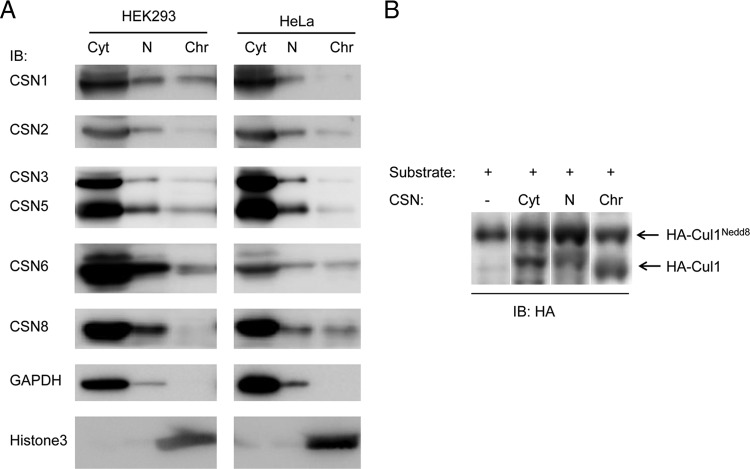FIG 2.
The active CSN complex is associated with the cytosol, nucleus, and chromatin. (A) Cellular proteins were biochemically separated into cytosolic (Cyt), nucleoplasmic (N), and chromatin-associated (Chr) fractions in the presence of phosphatase inhibitors and tested for the expression levels of various CSN subunits. For comparison, similar percentages of each fraction were loaded. Fractionation was assessed by detection of the chromatin-associated histone H3 (Histone3) protein and of the mainly cytosolic glyceraldehyde-3-phosphate dehydrogenase protein (GAPDH). IB, immunoblot. (B) The CSN complex was shown to be active in the different cellular fractions. Proteins from the different fractions were used in deneddylation assays utilizing neddylated HA-tagged S. pombe Cul1, and the immunoblot was visualized by anti-HA antibody. Proteins (30 μg) from each fraction were used for the activity assays.

